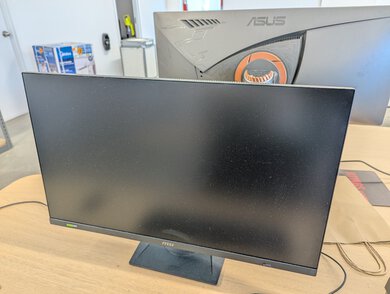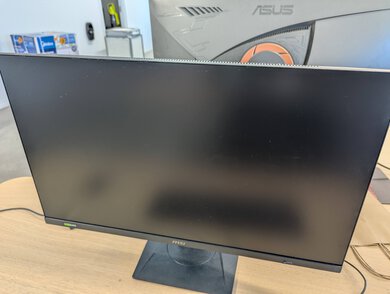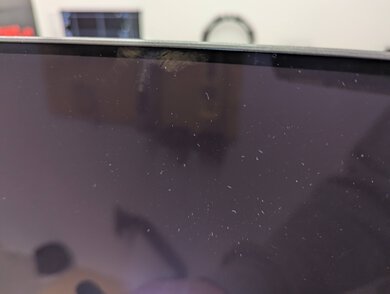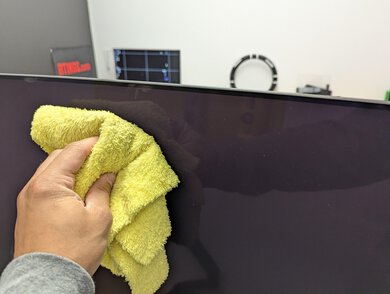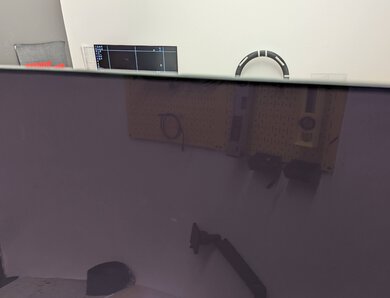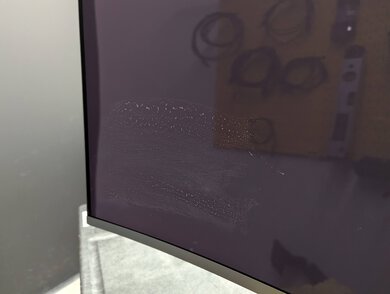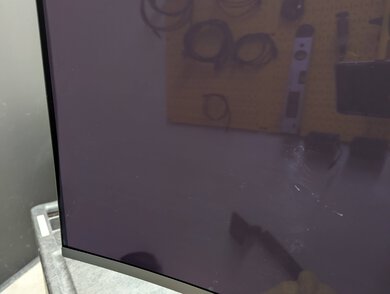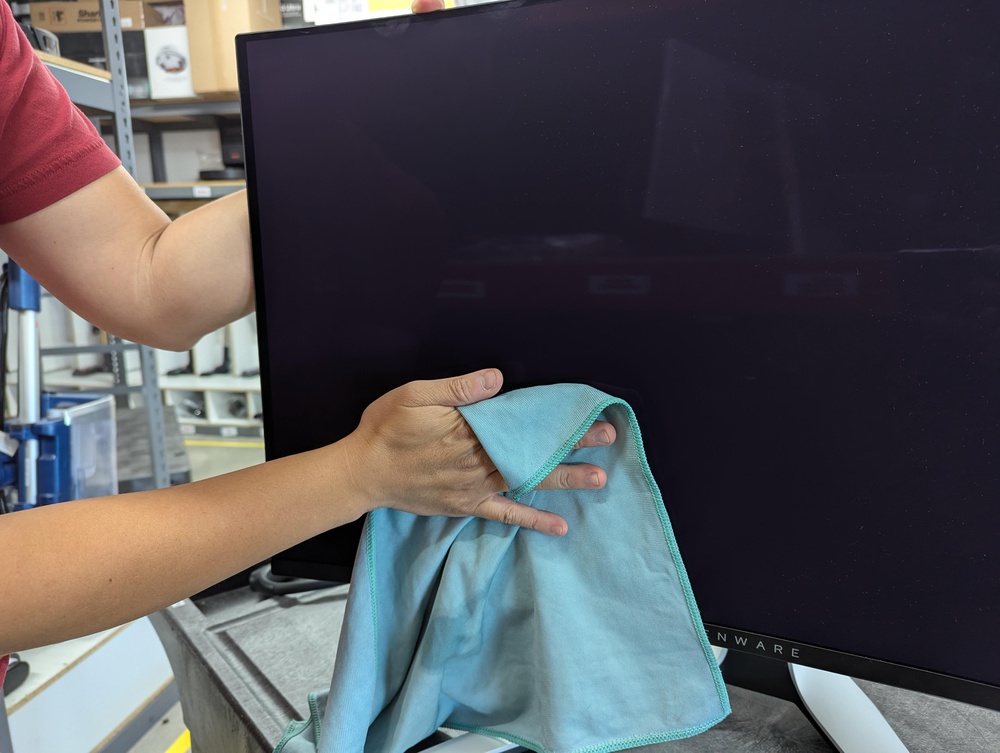
Wanting to clean your monitor, but not knowing how to properly do it, can feel overwhelming. You don't want to leave smudges that make the monitor look dirtier than before, or even worse, damage the screen. At RTINGS.com, we've tested over 350 monitors since 2017, and keep them in an industrial lab that easily collects dust. This means we need to clean them whenever we need to retest or take a picture of a monitor, so we know a thing or two about cleaning them.
In this article, we'll give you tips on how to clean a monitor screen without damaging it, but the solution is simple: don't use solution. Seriously, use a microfiber cloth without any liquids, and it will get the dust off.
Tips On How To Clean A Monitor

Learning how to clean a monitor, especially if it's just dusty, is a straightforward process. You can use any dry microfiber cloth to wipe dust off the display. If there are smudges or fingerprints, you can put some extra pressure while still lightly rubbing until they come off. Ideally, you should clean your monitor often, even once a week, so that dust doesn't accumulate (like on the monitor in the example below!). Even after wiping the dust off the monitor, there are still some smudges because of how dirty it was.
If you don't have a microfiber cloth, you can use any soft dusting tool, like a Swiffer.
The Problem With Glossy Displays
Most monitors use a matte screen coating, like in the example above. A matte coating is defined by its grainy look, while other monitors use a glossy coating. The main characteristic of a glossy coating is that it's clearer than matte, and light reflects back like a mirror, as in the example below. The problem with glossy monitors, though, is how dirty they get and how fragile they are. There are multiple reports online of people scratching their glossy screens when trying to clean them.
While this might concern you if you have a glossy monitor and want to clean it, the best solution is to use a fluffy microfiber cloth, like the one pictured below. This reduces the chances of dirt getting stuck in the cloth and scratching the screen. These microfiber cloths are also good for removing fingerprints or smudges on glossy screens, as you can see below.
What To Avoid When Cleaning A Monitor
Knowing how to clean a computer screen, like a monitor display, is pretty simple and doesn't require many different tools. However, there are many things you can use that could damage the screen. If you do scratch your screen, or if it's already scratched, and you're looking for a way to fix it, it's best to contact the manufacturer's customer support.
Stay Away From Solutions Or Pre-Made Products
Contrary to popular belief, you shouldn't be using any liquid solutions, like pre-made products, when learning how to clean a computer screen. While they're advertised as being safe for screens, most leave streaks on the monitor. Below is an example of using a small amount of Whoosh on a glossy monitor. Although it's hard to tell in the photo, using this product with a microfiber cloth leaves noticeable streaks. This isn't against the Whoosh product itself, but you'll get similar results with any cleaning product—and you should definitely not use Windex.
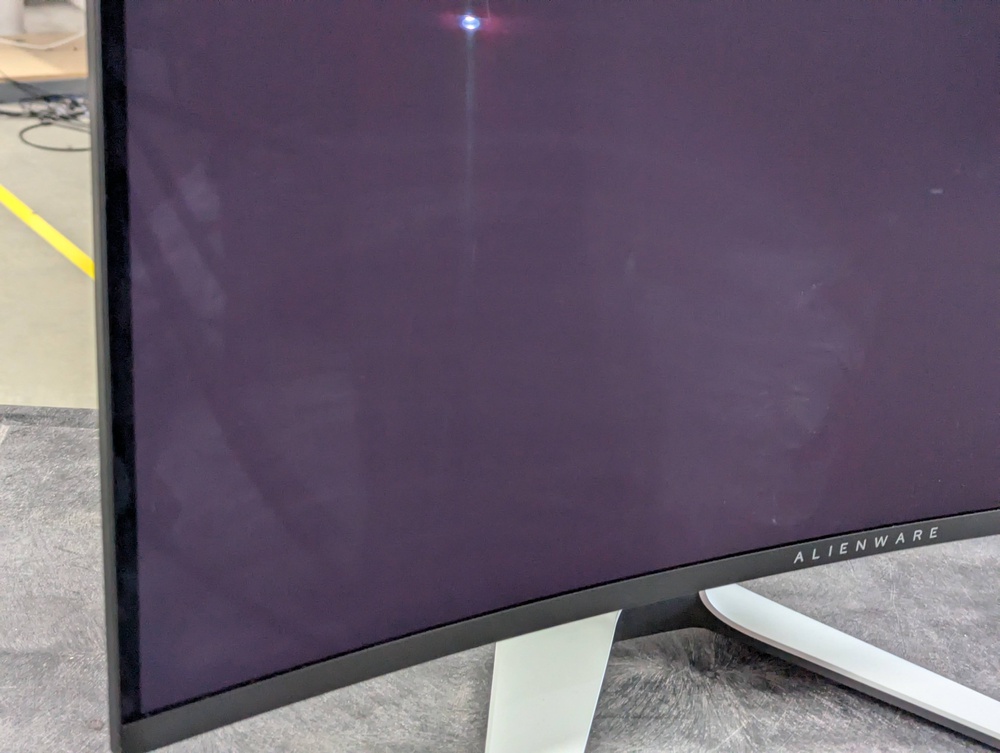
Using Tap Water
If you're going to use any liquid to clean a particularly tough stain or smudge, you should only use distilled water, not tap water. This is because tap water has a lot of minerals that can damage the screen, while distilled water is purer.
Don't Use Paper Towel
A paper towel is one of the worst materials you could use to clean a monitor. Anyone with glasses also knows about this; while a paper towel is great for the coffee you spilled on your desk, don't use it on your monitor. We tried cleaning a monitor with paper towel, a wet and dry one, and you can see the results below. Paper towel with water is particularly bad, as it leaves worse streaks than a dry paper towel. Using tissue doesn't fare much better, as it can still leave streaks or fluff on the monitor.
Conclusion
Learning how to clean a computer screen isn't as complicated as you think, but there are more things you shouldn't do than you should do. For example, you shouldn't use a paper towel, tap water, and/or pre-made cleaning products. Instead, all you need is a dry microfiber cloth. Generally speaking, fluffier cloths are better, as there's less chance they'll scratch the screen, but using any microfiber cloth is better than using products you shouldn't use.
